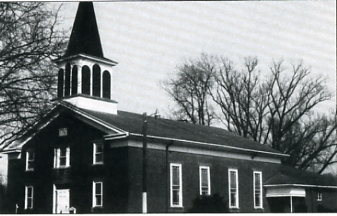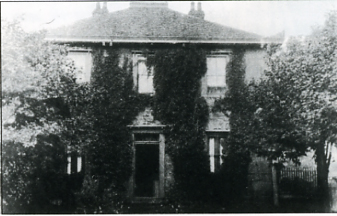
Click Here to Return to Milestones
Darlington and its surrounding areas was the
second most important Abolitionist and Underground Railroad center
in Beaver County.
From the mostly Quaker New Brighton conductors to the mostly Free
Presbyterian operators in the Darlington Area, many slaves were
transported safely to freedom in Canada via a Salem, Ohio, route
or by way of New Castle. Another route ran from Black Hawk in
South Beaver Township, through Cannelton (which is in the Darlington
area) to Achor in Ohio and then to the northwest and Canada.
Central to much of this activity were the dedicated men and women
in the Darlington area.
Residents in Darlington were very involved is stamping out slavery.
According to the Warner History of Beaver County, Pennsylvania,
a well developed antislavery resolution was recorded at a meeting
at Greersburg Academy in Darlington on January 28, 1836.
Local residents also wrote and adopted a constitution and elected
officers including the Rev. David Imbrie as president; Dr. Joseph
Frazier and Dr. James Cochran as vice presidents; the Rev. George
Scott as secretary; and William Adair, Joseph Taylor, James Cook,
Thomas Silliman, John Steel, Robert Russell, and William Scott
as the board of managers.
An interesting side-note is the fact that John Brown, the radical
Abolitionist that tried to start an insurrection by attacking
Harper's Ferry Arsenal, had been a student at Greersburg Academy,
staying with its president, Rev. Thomas E. Hughes.
Among prominent antislavery supporters in the county were Thomas
Silliman of Darlington Township, who considered slavery a crime
against both God and man, and S.H. Barclay of South Beaver Township
(Bausman 1144).
Of course the primary force in this area was Arthur Bullus Bradford,
one of the dominant leaders in the North against slavery, and
a conductor on the Underground.

In 1845, led by Arthur Bradford, The Free Presbyterian Church was formed in Darlington after sharp dissenting views with the Presbyterian Church over the issue of slavery. The beautiful red brick church was built in 1847. After the Civil War, the Free Presbyterians merged with the Reformed Presbyterian Church.

Greersburg Academy, established with funds collected by Rev. Thomas E. Hughes, was built in 1802 and chartered by the state legislature in 1806. The first academy west of the Alleghenies, it provided a forum for antislavery town meetings. In 1836 the Greersburg Anti-Slavery Resolution was written and adopted. John Brown, of Harper's Ferry fame, attended here.